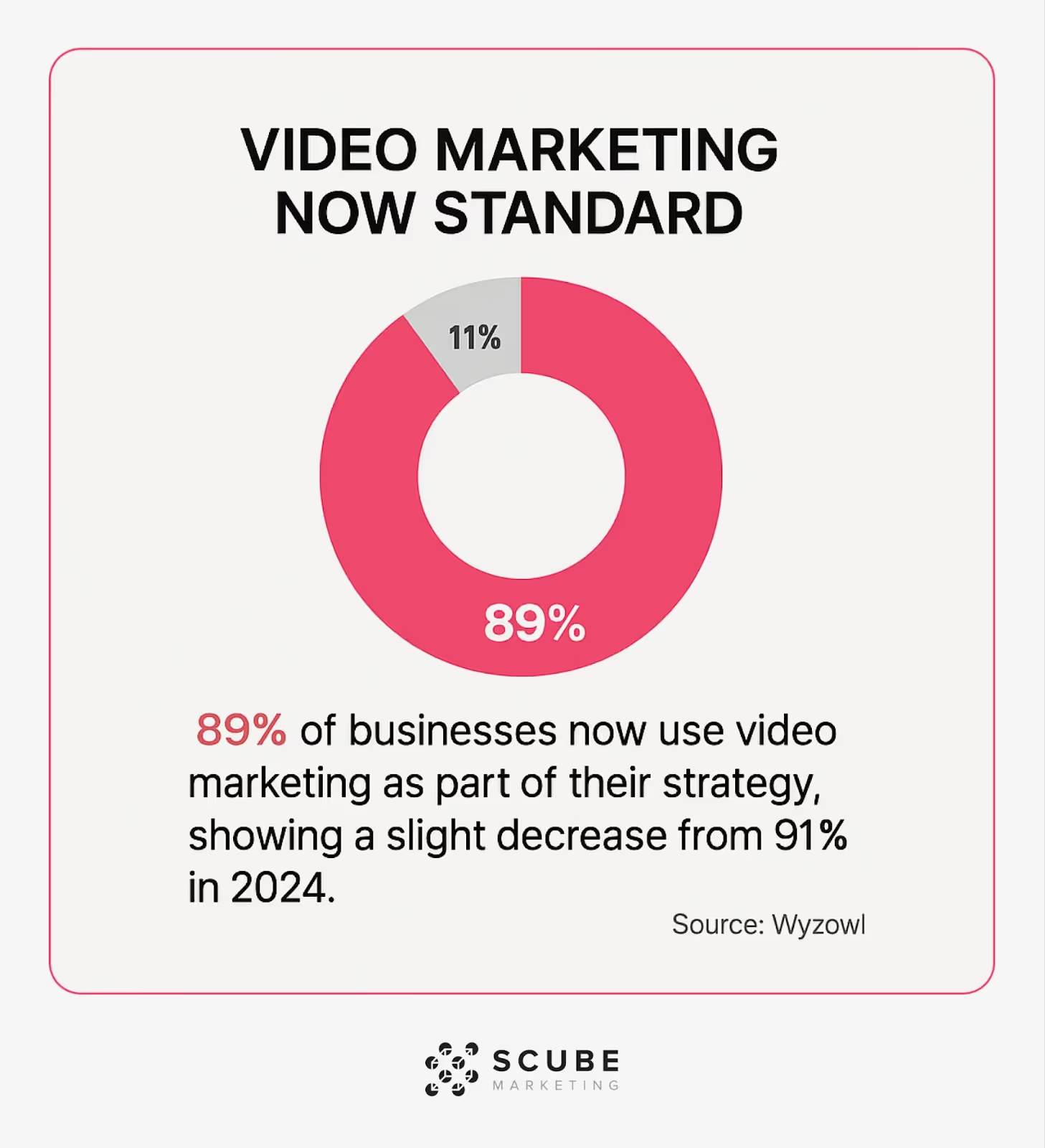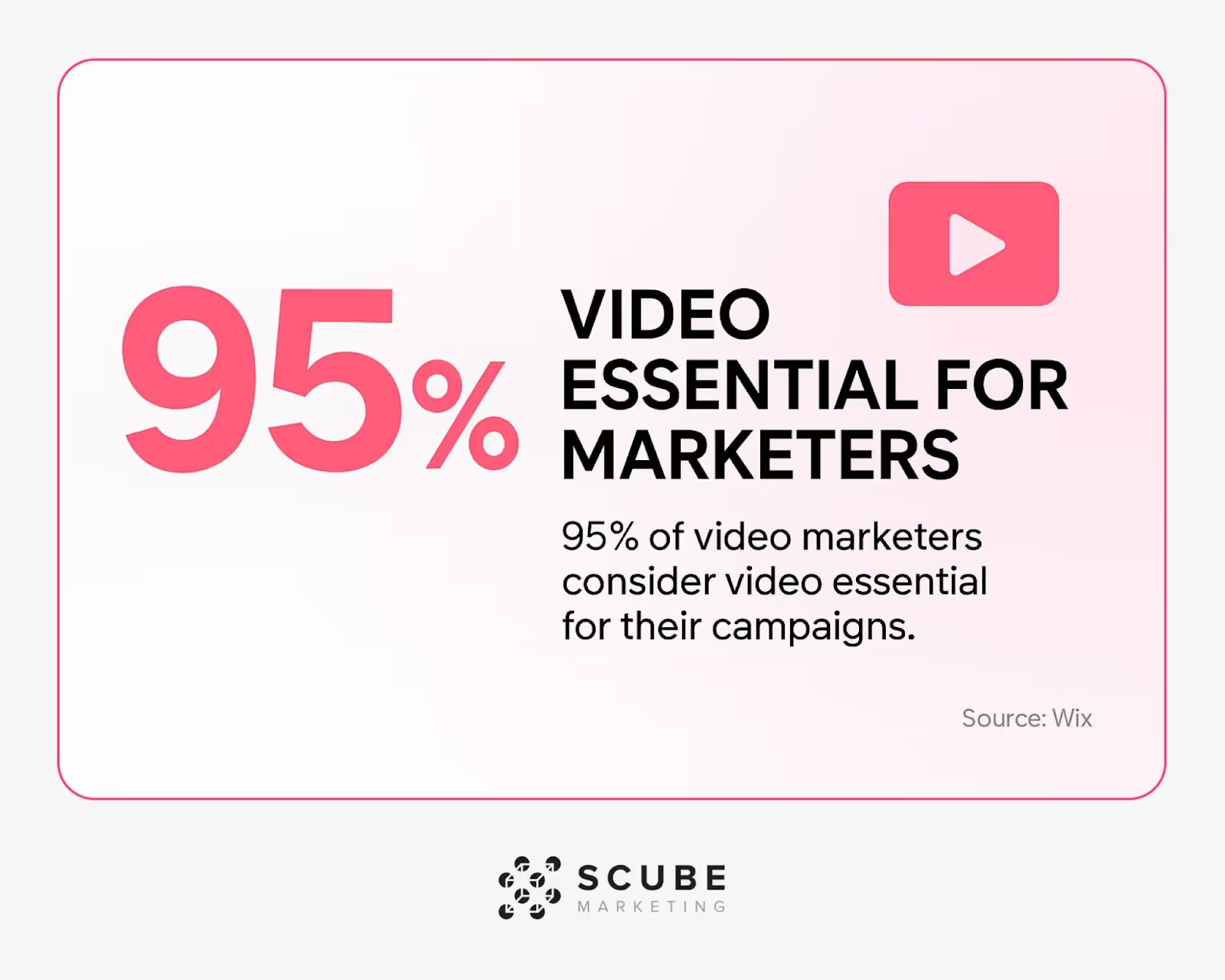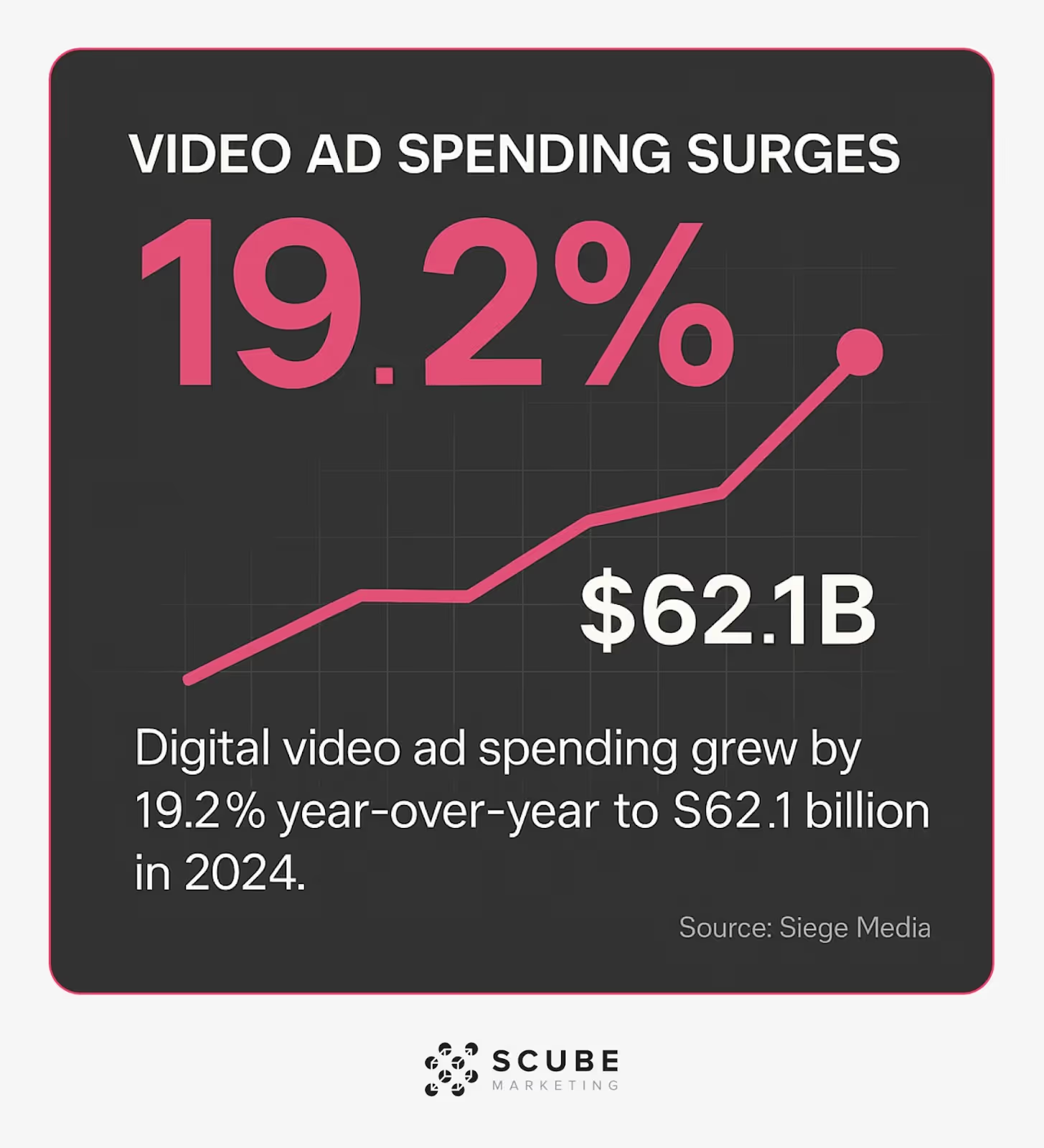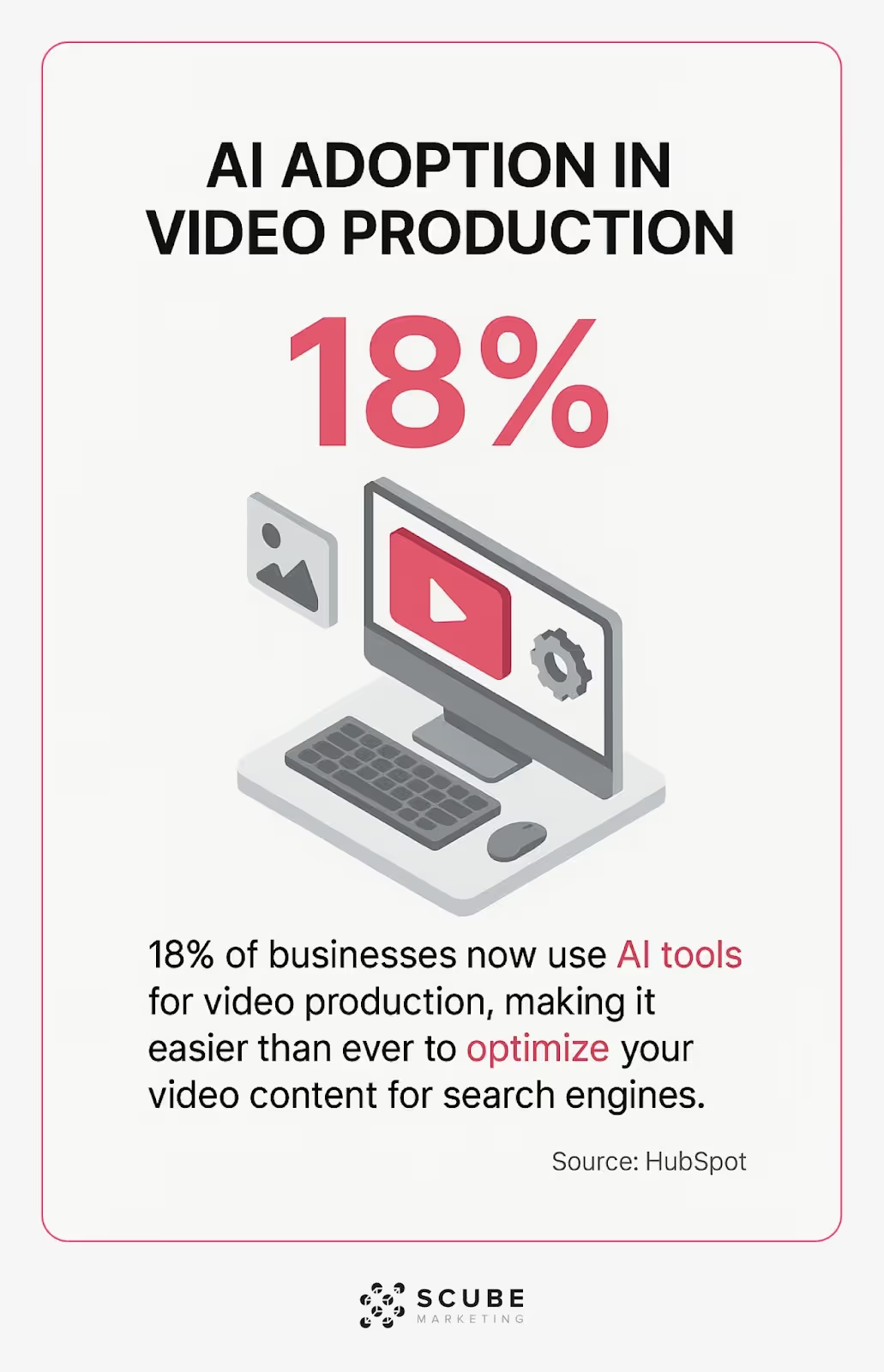.png)
In the auto parts industry, showing is often more powerful than telling. A customer can read about a performance exhaust system all day, but seeing it installed and hearing the improved engine note makes a world of difference. As the owner of a PPC agency specializing in eCommerce, I've seen firsthand how video ads transform the way auto parts businesses connect with customers and drive sales. Video allows you to demonstrate products in action, showcase installation processes, and build trust with potential buyers in ways static images simply cannot.
In this guide, I'll share proven formats and best practices for creating compelling video ads specifically for auto parts and aftermarket products. Whether you're just starting with video marketing or looking to improve your existing strategy, these insights will help you create more effective campaigns that resonate with auto enthusiasts and parts buyers.

Video content has become indispensable in digital marketing, especially for visually demonstrative products like auto parts. According to recent research, 89% of businesses now use video marketing as part of their strategy, showing a slight decrease from 91% in 2024. (Source: Wyzowl)
For auto parts sellers, video offers unique advantages that static images or text descriptions can't match. These include demonstration of fit and function, visualization of installation processes, showcasing before/after results, highlighting quality craftsmanship, and building trust through expert guidance.
Auto parts and accessories are highly visual products where functionality, appearance, and installation matter greatly to customers. Video addresses all these concerns directly and effectively.
The auto parts market is uniquely suited for video marketing because buyers often need to see exactly how products look, fit, and function before making a purchase decision. When selling complicated mechanical components, being able to show a part in action or demonstrate an installation process builds buyer confidence and reduces return rates.

The data shows why video has become such a powerful tool for auto parts marketing. With 95% of video marketers considering it essential for their campaigns, it's clear that visual demonstration is key to effective product marketing. (Source: Wix)
Before creating your video ads, it's essential to understand who you're targeting. The automotive aftermarket serves diverse customer segments with different needs, knowledge levels, and buying motivations.
The automotive parts market broadly splits between DIY enthusiasts who install parts themselves and DIFM (Do It For Me) customers who purchase parts but have them professionally installed. Your video content should address the specific concerns of your target segment.
DIY enthusiasts often look for detailed installation guidance, technical specifications, and performance results. These customers value educational content that helps them complete their projects successfully. For the DIFM audience, focus more on benefits, quality assurance, and the difference the part will make to their vehicle.
Another important distinction is between functional repair parts and performance/aesthetic upgrades. Videos for necessary replacement parts should emphasize reliability, fit, and quality, while performance upgrade videos can focus more on the improvements and enhancements customers will experience.
When planning your video content, consider where your customers are in their buying journey. Educational content works well for awareness stage buyers, while comparison videos and testimonials are more effective for those closer to making a purchase decision.
For a complete approach to selling auto parts online, our complete guide to selling auto parts online covers everything from platform selection to fulfillment strategies.
Different video formats serve different marketing goals. Here are the most effective formats for auto parts businesses, each with its own strengths and ideal applications.
Product demonstration videos show your auto parts in action, highlighting features, functionality, and benefits. These videos are particularly effective for performance parts where customers want to see actual results.
Good product demonstrations should show the part from multiple angles, demonstrate key features clearly, compare before and after performance when applicable, highlight quality and materials, and include relevant technical specifications.
For example, a video for a cold air intake might show the product up close, demonstrate the installation process briefly, and then show before/after dyno results or acceleration improvements.
Installation tutorials are among the most valuable content for DIY auto enthusiasts. These step-by-step guides show customers exactly how to install a part, what tools they'll need, and any potential challenges they might face.
Short-form videos are particularly popular for installation guidance, allowing viewers to accomplish specific goals efficiently without wading through excessive content.
Effective installation videos should list required tools upfront, show the process in logical steps, highlight potential challenges or tips, demonstrate proper techniques, and include estimated time requirements.
Even if your primary customers are DIFM buyers, installation videos build credibility by showing that you understand your products thoroughly.
Comparison videos help customers make informed decisions by contrasting your parts with OEM components or competitor products. These videos are particularly effective for higher-priced items where customers are carefully evaluating options.
Effective comparison videos show objective side-by-side comparisons, highlight meaningful differences in quality or materials, demonstrate performance differences, explain price-to-value relationships, and avoid overly negative competitor comments.
Be honest and factual in your comparisons. Customers appreciate transparency and will trust you more when you acknowledge both strengths and limitations.
Customer testimonials add social proof and authenticity to your marketing. Many marketers cite "not knowing where to start" as their main barrier to entry with video marketing, but testimonials are actually one of the easiest formats to begin with.
Effective testimonial videos feature real customers with real experiences, show the installed part on their vehicle, include specific details about their experience, address common concerns, and feel authentic rather than scripted.
Testimonials work particularly well for expensive upgrades or parts where customers are concerned about fit, quality, or performance claims.
Brand videos help customers connect emotionally with your company by showing the people, processes, and values behind your products. These videos are excellent for building long-term customer relationships and loyalty.
How can aftermarket auto parts businesses succeed in eCommerce? This is a question many of our clients ask when starting their digital journey. Brand storytelling through video is one powerful strategy that helps businesses stand out in a crowded marketplace.
Each format serves different marketing objectives and customer needs. A thorough video strategy will typically include a mix of these formats to address various stages of the customer journey.
Now that we've covered the main video formats, let's discuss how to optimize your auto parts videos for maximum impact and conversion.
Always emphasize how your products solve specific problems for vehicle owners. Whether it's improving performance, fixing a common issue, enhancing appearance, or extending part life, make the benefit clear and central to your message.

Digital video ad spending grew by 19.2% year-over-year to $62.1 billion in 2024, highlighting the growing competition for viewer attention. (Source: Siege Media) To stand out, your videos must quickly communicate unique value.
Focus on answering these questions in your videos: What specific problem does this part solve? How does it improve the vehicle's performance or reliability? What makes this solution better than alternatives? What results can customers realistically expect?
Most consumers prefer to learn about products through short-form video, making it crucial to be concise and focused. Structure your videos with these principles in mind: Start with a hook that immediately shows value, front-load the most important information, use a clear sequence, and end with a specific call-to-action.
Different platforms have different optimal lengths. Social media ads should typically be 15-30 seconds, while YouTube pre-roll ads are most effective at 15-20 seconds. For content marketing videos on your website or YouTube channel, you can go longer (2-5 minutes) if the content warrants it.
Every video should guide viewers toward a specific next step. Whether it's visiting your website, browsing a product category, or making a purchase, make your CTA clear and compelling.
Effective calls-to-action for auto parts videos include: "Shop now to upgrade your [vehicle model]", "Check compatibility with your vehicle", "See our complete line of [product category]", "Download our installation guide", and "Get expert installation at a dealer near you".
Place your CTA both verbally in the video and visually with on-screen text or buttons. For longer videos, consider including mid-video CTAs as well.
With the automotive aftermarket growing at a steady rate, video marketing provides a competitive edge when optimized properly. Your video titles, descriptions, and tags should include relevant keywords that auto parts buyers are searching for.

Research shows that 18% of businesses now use AI tools for video production, making it easier than ever to optimize your video content for search engines. (Source: HubSpot)
Key optimization areas include video titles (include part type, vehicle compatibility, and key benefit), descriptions (detailed information with relevant keywords), tags and categories (specific to your product and vehicle applications), and closed captions and transcripts (improve accessibility and searchability).
The majority of video content is now consumed on mobile devices, making mobile optimization essential. For auto parts videos, consider these mobile-specific best practices:
Use large, clear text that's readable on small screens. Ensure videos work well without sound (many mobile users watch with sound off). Optimize video dimensions for mobile viewing (vertical or square formats for social). Keep file sizes reasonable for varying connection speeds. Test playback on multiple devices and connection types.
Adapting your video content to each platform's specific requirements maximizes engagement and conversion potential.
Creating great video content is only half the battle. To continuously improve your results, you need to measure performance and adjust your strategy accordingly.
The concept of remarketing to viewers who've engaged with your video content can significantly increase conversion rates. Before implementing remarketing, however, you need to understand which videos are performing best.
Key performance indicators to track include view count and reach, engagement metrics (likes, comments, shares), view duration and retention rate, click-through rate, conversion rate, cost per view/click/conversion, and attribution data (which videos lead to purchases).
Different metrics matter for different marketing objectives. Awareness campaigns might focus on reach and view count, while conversion-focused campaigns should prioritize CTR and conversion rates.
Platforms like YouTube, Facebook, and TikTok provide robust analytics dashboards for tracking these metrics. Additionally, ensure your website analytics are configured to track video-driven traffic and conversions.
Creating effective video ads for auto parts comes with several common challenges. Here's how to address them.
You don't need Hollywood production values to create effective auto parts videos. Digital video advertising continues to grow significantly year over year, indicating that even small businesses are finding ways to create compelling video content with limited resources.
Budget-friendly approaches include using smartphones with stabilizers for basic product videos, leveraging user-generated content from customers, creating simple motion graphics videos, focusing on one high-quality hero video rather than many mediocre ones, and repurposing video content across multiple platforms and campaigns.
Auto parts can be technically complex, making it challenging to communicate clearly in a brief video. To address this, focus on one key feature or benefit per video, use visual aids like graphics or animations to explain complex concepts, compare with familiar objects when possible, include technical details in video descriptions rather than in the video itself, and create separate, more detailed videos for technical buyers.
Auto parts often need to fit specific vehicle makes and models, which can be difficult to showcase in videos. Solutions include creating separate videos for popular vehicle applications, using graphics to list compatible vehicles, showing the part installed on different vehicles, directing viewers to a compatibility checker on your website, and creating comparison videos showing fitment on different models.
Remember that authenticity often matters more than production value. A genuine, helpful video shot on a smartphone will typically outperform a slick but generic professional video.

Video ads have become an essential tool for marketing auto parts online. They allow you to demonstrate products, show installation processes, highlight benefits, and build trust with potential customers in ways that static images simply cannot.
To create effective video ads for your auto parts business: Understand your specific audience segments and their needs. Choose the right video formats for your products and marketing goals. Focus on clearly communicating benefits and solving problems. Optimize your videos for each platform and device. Track performance metrics and continuously refine your approach.
By implementing these strategies, you'll create video content that not only attracts attention but drives real business results for your auto parts eCommerce store.
Ready to elevate your auto parts marketing strategy beyond video? Check out our complete eCommerce PPC strategy guide to create a holistic approach that drives qualified traffic to your product videos and listings.